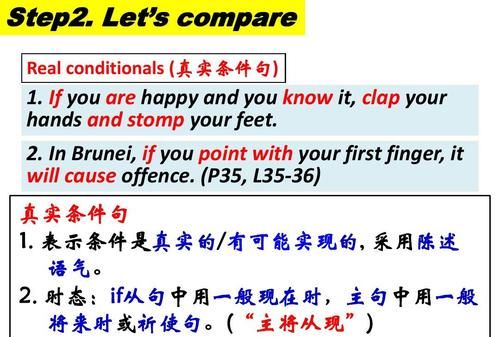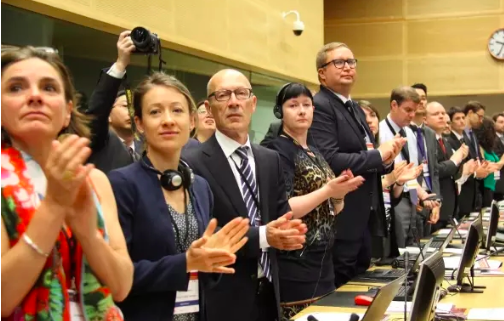本文目录
英语语法详解app
睡眼惺忪的起床.时钟播着那首"错与对".边听歌边做做伸展运动, 伸展 拉开筋骨. 踢踢腿再 拍拍手, 简直就像在梦游.
这里主要是说醒来的感觉是bleary-eyed, wake up feel bleary-eyed, sort of like other link verbs, : stay calm, remain cold, become nicer....
也可以说
wake up with bleary eyes/bloodshot eyes/puffy eyes
或 wake up, bleary-eyed in the morning.
(I am/was) doing morning stretches...... 谓语存在呀

拍拍你的手英文怎么说怎么读
Clap your hand
1、读音:英 [klæp jɔː(r) hænd] 美 [klæp jʊr hænd]
2、释义:拍手,拍拍手。
3、语法:clap的基本意思是“鼓掌,拍手”,表示为某人的表演或某事的成功而喝彩,引申可作“拍, 推”解,表示友善地拍或猛力地推。clap可用作及物动词,也可用作不及物动词。用作及物动词时,接名词或代词作宾语。

扩展资料
近义词:applaud
1、读音:英 [əˈplɔːd] 美 [əˈplɔːd]
2、释义:拍手喝彩。
3、语法:applaud的基本意思是以鼓掌和欢呼表达赞许或喜悦之情。applaud作“鼓掌喝彩”解时是不及物动词,作“向/为…鼓掌喝彩”或“赞许”“称赞”解时是及物动词,接名词或代词作宾语。
4、用法例句:He should be applauded for his courage
5、白话译文:他的勇气值得称道。
小学阶段动词的四种形式
do-did-done
go-went-gone
eat-ate-eaten
take-took-taken
have-had-had
动词原形—过去式—第三人称单数—现在分词
clean –cleaned—cleans—cleaning
swim—swam—swims—swimming
love—loved—loves—loved
make—made—makes—making
laugh—laughed—laughs—laughing
play—played—plays—playing
run—ran—runs—running
stamp—stamped—stamps—stamping
fly—flew—flies—flying
sing—sang—sings—singing
clap—clapped—claps—clapping
have—had—has—having
climb—climbed—climbs—climbing
read—read—reads—reading
watch—watched—watches—watching
copy—copied—copies—copying
see—saw—sees—seeing
become—became—becomes—becoming
begin—began—begins—beginning
catch—caught—catches—catching
come—came—comes—coming
do—did—does—doing
drink—drank—drinks—drinking
eat—ate—eats—eating
get—got—gets—getting
go—went—goes—going
give—gave—gives—giving
run—ran—runs—running
sing—sang—sings—singing
take—took—takes—taking
teach—taught—teaches—teaching
回答者: 好就j - 实习生 一级 2009-9-25 20:19
一. 词汇
⑴ 单词
1. 介词:in, on, under, behind, near, at, of
1). in表示"在……中", "在……内"。例如:
in our class 在我们班上
in my bag 在我的书包里
in the desk 在桌子里
in the classroom 在教室里
2). on 表示"在……上"。例如:
on the wall 在墙上
on the desk 在桌子上
on the blackboard 在黑板上
3). under表示"在……下"。例如:
under the tree 在树下
under the chair 在椅子下
under the bed 在床下
4). behind表示"在……后面"。例如:
behind the door 在门后
behind the tree 在树后
5). near表示"在……附近"。例如:
near the teacher's desk 在讲桌附近
near the bed 在床附近
6). at表示"在……处"。例如:
at school 在学校
at home 在家
at the door 在门口
7). of 表示"……的"。例如:
a picture of our classroom 我们教室的一幅画
a map of China 一张中国地图
2. 冠词 a / an / the:
冠词一般位于所限定的名词前,用来署名名词所指的人或事物。冠词有不定冠词和定冠词两种。不定冠词有两个形式,即a和an。a用在以辅音音素开头的词前,如a book; an用在以元音音素开头的字母前,如an apple.
a或an与可数名词单数连用,泛指某类人或某物中的一个。
This is a cat.
这是一只猫。
It's an English book.
这是一本英语书。
His father is a worker.
他的爸爸是个工人。
the既可以用在可数名词前,也可以用在不可数名词前,表示某个或某些特定的人或事物,也可以指上文提到过的人或事物。
Who's the boy in the hat?
戴帽子的男孩是谁呀?
------ What can you see in the classroom?
------ I can see a bag.
------ Where's the bag?
------ It's on the desk.
------- 你能在教室里看到什么呀?
------ 我能看见一个书包。
------ 书包在哪呀?
------ 在桌子上。
3.some和any
①在肯定句中用some.例如:
There are some books on the desk.桌子上有一些书。
Lucy has some good books露西有一些好书。
②在疑问句和否定句中用any。例如:
Is there any ink in your pen?你的钢笔里有墨水吗?
Do you have any brothers and sisters?你有兄弟姐妹吗?
There isn't any water in the glass.杯子里没有水。
⑵记住它们的特殊用法。
①some亦可用于表示盼望得到对方肯定的答复或表示建议、委婉请求的疑问句中,这一点我们不久就会学到。例如:
Would you like to have some apples?你想吃苹果吗?
②any也可用于肯定句中,表示"任何的"。例如:
Any one of us can do this.我们当中任何一个都能做这个。
some 和any的用法是经常出现的考点,希望大家能准确地掌握它们的用法。
4.family
family看作为一个整体时,意思是"家庭",后面的谓语动词be用单数形式 is ;如把family看作为家庭成员时,应理解为复数,后面的谓语动词be应用are。
My family is a big family. 我的家庭是个大家庭。
My family are all at home now. 我的家人现在都在家。
Family强调由家人组成的一个集体或强调这个集体中的成员。home指个人出生、被抚养长大的环境和居住地点。 house指"家"、"房屋",侧重居住的建筑本身。
His family are all workers. 他的家人都是工人。
My home is in Beijing. 我的家在北京。
He isn't at home now. 他现在不在家。
It's a picture of my family. 这是一张我全家的照片。
5. little的用法
a little dog 一只小狗,a little boy 一个小男孩。little常用来修饰有生命的名词。
*但little还可表示否定意义,意为"少的",加不可数名词。
There is little time. 几乎没时间了。
There is little water in the cup. 杯中水很少。
⑵ 词组
on the desk 在桌子上
behind the chair 在椅子后
under the chair 在椅子下面
in her pencil-box 在她的铅笔盒中
near the door 在门附近
a picture of a classroom 一个教室的图片
look at the picture 看这张图片
the teacher's desk 讲桌
a map of China 一张中国地图
family tree 家谱
have a seat 坐下,就坐
this way 这边走
二. 日常用语
1. Come and meet my family.
2. Go and see. I think it's Li Lei.
3. Glad to meet you.
4. What can you see in the picture?
I can see a clock / some books.
5. Can you see an orange?
Yes, I can. / No, I can't.
6. Where's Shenzhen?
It's near Hong Kong.
7. Let me see.(口语)让我想想看。
see 在这是"明白、懂了",不可译作"看见"。例如:
8. Please have a seat.
seat表示"座位",是个名词。have a seat表示"就坐",也可以说take a seat, 和sit down的意思相同。
三. 语法
1. 名词所有格
名词如要表示与后面名词的所有关系,通常用名词所有格的形式,意为"……的"。一般有以下几种形式:
(1). 一般情况下在词尾加"'s"。例如:
Kate's father Kate的爸爸
my mother's friend 我妈妈的朋友
(2). 如果复数名词以s结尾,只加"'"。例如:
Teachers' Day 教师节
The boys' game 男孩们的游戏
(3). 如果复数名词不以s结尾,仍加"'s"。例如:
Children's Day 儿童节
Women's Day 妇女节
(4). 表示两个或几个共有时,所有格应加在后一个名词上。例如:
Lucy and Lily's room Lucy 和Lily的房间
Kate and Jim's father Kate 和Jim的爸爸
动物和无生命事物的名词的所有格一般不在词尾加"'s",而常常用介词of的短语来表示。
a map of China 一幅中国地图
the name of her cat 她的猫的名字
a picture of my family 我的家庭的一张照片
the door of the bedroom 卧室的门
2. 祈使句
祈使句主要用来表示说话人的请求、命令、建议、叮嘱等意图。祈使句一般不用主语,读时用降调。为使语气委婉、礼貌,常在句首或句尾加please 。在句尾时,please前多用逗号。
(1). 祈使句肯定形式的谓语动词一律用动词原形。
Go and see. 去看看。
Come in, please. 请进。
(2). 祈使句的否定形式常用don't于句首。
Don't look at your books. 不要看书。
Don't play on the road. 不要在马路上玩。
3. There be 的句子结构
There be是一个"存在"句型,表示"有"的意思,
肯定句的形式为:There be + 名词(单数或复数)+地点状语或时间状语。
be动词单复数的确定,看be后边第一个名词,当所接主语为单数或不可数名词时,be动词形式为is;当所接主语为复数名词时,be动词为are;当be动词后接两个以上主语时,be动词与最临近主语保持数上的一致。意思为"某地有某人或某物"。如:
There is an eraser and two pens on the desk. 桌子上有一块橡皮和两支钢笔。
There are two pens and an eraser on the desk. 桌上有两支钢笔和一块橡皮。
(1)there be的否定句,即在be的后面加上not。
否定形式为:There be + not + (any) + 名词+地点状语。
There is not any cat in the room. 房间里没猫。
There aren't any books on the desk. 桌子上没书。
(2)there be句型的疑问句就是将be提到句首:Be there + (any) +名词+地点状语?肯定回答:Yes, there is / are. 否定回答:No, there isn't / aren't.
---Is there a dog in the picture? 画上有一只狗吗?
---Yes, there is. 有。
---Are there any boats in the river? 河里有船吗?
---No, there aren't. 没有。
(3)特殊疑问句:How many . . . are there (+地点状语)?"某地有多少人或物?"回答用There be . . .
There's one. / There are two / three / some . . .
有时直接就用数字来回答。One. / Two . . .
---How many students are there in the classroom? 教室里有多少学生?
---There's only one. / There are nine. 只有一个。/有九个。
(4)如果名词是不可数名词,用:How much + 不可数名词 + is there + 地点状语?
How much water is there in the cup? 杯中有多少水?
How much food is there in the bowl? 碗里有多少食物?
回答者: 韦灵透 - 见习主管 五级 2009-9-25 20:23
动词原形—过去式—第三人称单数—现在分词
clean –cleaned—cleans—cleaning
swim—swam—swims—swimming
love—loved—loves—loved
make—made—makes—making
play—played—plays—playing
run—ran—runs—running
stamp—stamped—stamps—stamping
fly—flew—flies—flying
sing—sang—sings—singing
clap—clapped—claps—clapping
have—had—has—having
climb—climbed—climbs—climbing
read—read—reads—reading
watch—watched—watches—watching
copy—copied—copies—copying
see—saw—sees—seeing
become—became—becomes—becoming
begin—began—begins—beginning
catch—caught—catches—catching
come—came—comes—coming
do—did—does—doing
drink—drank—drinks—drinking
eat—ate—eats—eating
get—got—gets—getting
go—went—goes—going
give—gave—gives—giving
run—ran—runs—running
sing—sang—sings—singing
take—took—takes—taking
teach—taught—teaches—teaching

让我们为他鼓掌 英语准确翻译是什么
让我们为他鼓掌的英文翻译是Let's applaud him.
1、let的英式读法是[let];美式读法是[let]。
作动词意思有让;允许;(用于祈使句表建议、请求、命令)让;假设;出租。作名词意思有出租;阻碍;(网球等)触网重发。
在口语中,let常用于祈使句中表示建议、请求、命令、警告等;在书面语中,可用allow代替let。
2、applaud的英式读法是[ə'plɔːd];美式读法是[ə'plɔːd]。
作不及物动词意思是拍手喝彩。作及物动词意思有称赞;赞成;鼓掌。

扩展资料:
单词用法:
一、applaud
v. (动词)
1、applaud的基本意思是以鼓掌和欢呼表达赞许或喜悦之情。
2、applaud作“鼓掌喝彩”解时是不及物动词; 作“向/为…鼓掌喝彩”或“赞许”“称赞”解时是及物动词,接名词或代词作宾语。
二、let
v. (动词)
1、let的基本意思是允许对方照其意思而行,引申可表示“出租”“放掉,松掉”等。用于数学中通常表示“假设”。
2、let用作及物动词作“出租”解时,可接名词或代词作宾语,也可接双宾语,其间接宾语可以转化为介词to的宾语。
作“让,使”解时,通常接以形容词或不带to的动词不定式充当补足语的复合宾语;接动词不定式作宾语补足语时,如用于被动结构,to须保留。let还可接不带to的动词不定式作宾语,这时主要用于某些固定搭配中。
3、let用作不及物动词时主要表示“出租”,主语通常为物(如房子等),其主动形式含有被动意义。
以上就是关于clap能做主语 ,英语语法详解app的全部内容,以及clap能做主语吗 的相关内容,希望能够帮到您。

